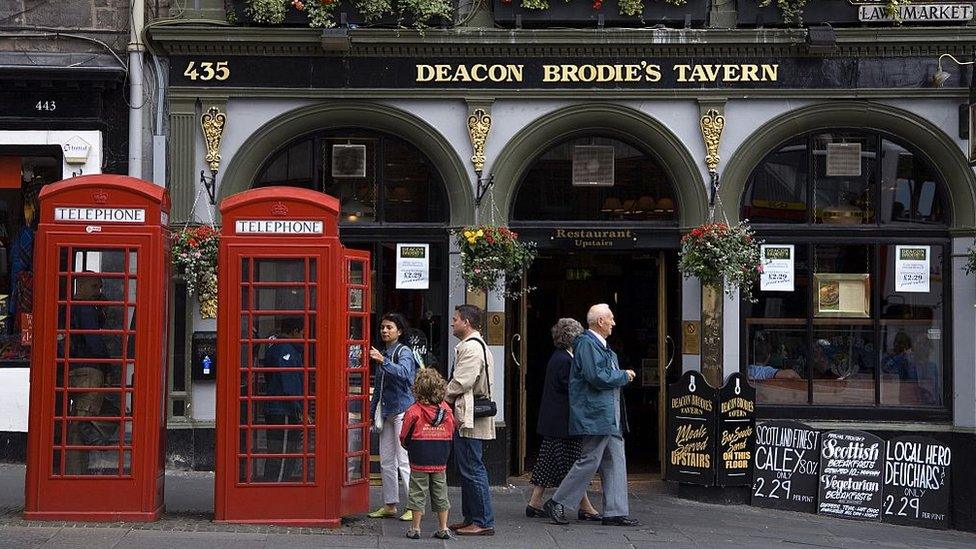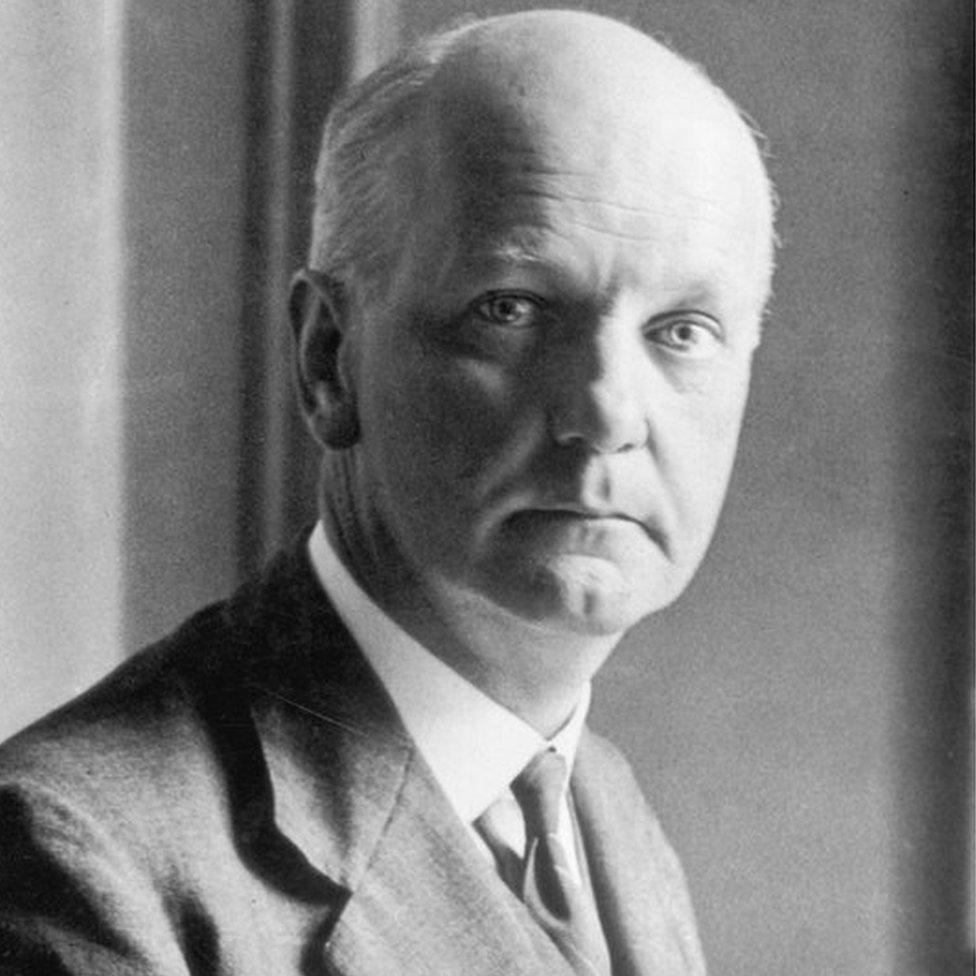Call made to Scots to 'adopt' a classic red phone box
- Published

Two of Scotland's 470 remaining red phone boxes
Communities across Scotland are being urged to preserve a piece of history by adopting and adapting a traditional red phone box.
A new scheme offers the chance to take on one of 162 red boxes for £1 each.
The traditional kiosks account for 470 out of 2,200 pay phones remaining in Scotland.
Redundant boxes have been adopted and turned into a range of facilities in recent years, from defibrillator units to libraries and museums.
This latest adoption scheme is designed to celebrate the upcoming 100th anniversary of the red boxes.
The box was designed in 1924 by the architect Sir Giles Gilbert Scott, whose other works included Battersea power station and St Columba's Cathedral in Oban.
His design was picked in a national competition organised by the General Post Office (GPO), which ran the UK's telecommunications network.

Architect Sir Giles Gilbert Scott designed the iconic red box
Across the UK, about 20,000 working payphones remain in operation, down from a peak of more than 100,000 in the 1990s.
BT, the company which owns the boxes and was previously known as British Telecom, introduced its "Adopt a Kiosk" programme in 2008. Since then, about 550 phone boxes have been taken on by communities across Scotland for £1 each.
More than 7,200 have been adopted UK-wide so far. The kiosks can be adopted by registered charities, community councils and local authorities.
One recent example is the 201 Telephone Box Gallery near St Andrews. which was adapted by the Fife-based artist Lada Wilson.
The redundant red box stands in the the village of Strathkinness near St Andrews. Since opening in 2018, there have been more than 25 exhibitions in the mini art space which showcases contemporary art by local, national and international artists.

A recent transformation of a red box is this art gallery near St Andrews
Lada Wilson said she was proud of the part it had played in bringing art to the village and added that the gallery had helped inspire other kiosk galleries across the UK.
"I've been really pleased with the level of support it gets and I've had people coming to me from across the country asking how I did it," she said.
Most of the redundant phone boxes are in rural areas. The largest number - 32- are in the Scottish Borders and there are 31 available in the Highlands.
The communications regulator Ofcom decides which phone boxes are available for removal based on factors including mobile coverage, how many calls have been made from them over the previous 12 months, and whether a phone is needed at a specific site for emergency use.
BT's Michael Smy said significant improvements to mobile coverage across the UK had seen a large drop in the number of calls made from payphones.
"We're continuing to review our payphones estate, making sure we're prioritising the removal of those not being used, in line with Ofcom's latest guidance," he said.
"With the iconic red kiosk about to turn 100, it's a great opportunity to remind communities that would still like to retain their local kiosk to take it on for just £1 through our Adopt a Kiosk scheme. We've already seen some great kiosk conversions across the UK that have become valuable community assets."